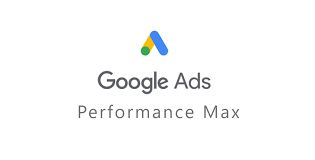In a continuation of our blog series about Google Ads rolling out Performance Max Campaigns (Nov 2021) and upgrading to Performance Max Campaigns (Feb 2022), we now examine the optimisation of these campaigns and what to look out for.

Firstly and importantly, accurate conversion tracking has become increasingly vital with the advent of Performance Max (PM) campaigns. So it’s highly recommended only businesses that have well-tested and robust tracking in place launch them.
Secondly, PM campaigns should have at least $50-100 budget per day available for at least a month because otherwise, it’s unlikely that enough data will be generated for the format to work properly through accurate machine-learning.
Now that the importance of those two factors has been emphasised, we can continue onto the top 10 optimisation recommendations:
1. Only accurate conversion tracking should be used
It’s imperative to fix any conversion tracking issues immediately as a conversion tracking has always been important in Google Ads and it’s even more vital in PM. Automation is growing in importance in PPC, so the the accuracy of conversion tracking implementation has become increasingly critical for the machine learning to be effective.
It’s often easier for e-Com businesses to attain accurate transaction conversion tracking than lead-generation ones, which often find getting good quality lead conversion tracking in place to be a challenge.
2. Use Google Analytics for better reporting by using a PM campaign segment of Users
A much better understanding of how users are interact with a business’s website can be attained through the use of Google Analytics. This is especially the case when a segment of users is created for whom the acquisition campaign contains PM.
3. Target only specific URLs by turning off the default URL expansion setting
PM campaigns have final URL expansion turned on by default. It’s best to turn off that default setting and send traffic to only specifically provided URLs, to ensure only the required URLs are targeted.
4. Use at least 1 better quality video asset to improve on an auto-generated one
PM will auto-generate a video asset if one isn’t provided. These aren’t good quality so to improve upon just using that default one, a better quality video should be uploaded to YouTube. (As with all Google Ads campaigns, this upload needs to be done before it can be used in a campaign). Select select “Unlisted” visibility if it’s required that the video not be be visible on the business’s YouTube channel.
5. Change the default location targeting setting to ‘Presence’ only
The ‘Presence’ setting is better than the default ‘Presence or interest’ (people in the location or interested in it) one because otherwise, the ads could be showing to people outside of the required set locations.
6. For upper/mid funnel conversions, set those actions at the campaign level
To use PM for mid-funnel or upper-funnel objectives, set those conversion actions at the campaign level. e.g. if PM is to be tested on an awareness objective, create a “Page View” conversion action, and set the campaign to only optimise for Page Views. (PM campaigns will only allow bidding for Conversion or Conversion Value.)
7. Audience signals (formerly ‘optimized targeting’) should be created
To let Google Ads know what type of users you’re interested in showing ads to through a PM campaign, it’s necessary create audience signals.
Two kinds of audience segments should be added:
- Remarketing – a customer list is best, (otherwise pixel-based website remarketing will suffice).
- Custom audience – it’s best to build it using the search terms that convert best in Search & Shopping.
8. Use Insights and the audience segments report for the best reporting
There’s less reporting transparency in PM but there’s still quite a fair amount of useful information on the Insights tab.
Top performing “Search categories” and “Audience segments” will appear after a PM campaign has been running for a few days/weeks (depending on the budget).
It’s really helpful to gauge if the Video/Display portion of the PM campaign is reaching the right audience by viewing the audience segments report that displays to which Google audiences the converting users belong.
9. Do not duplicate image assets by adding separate ‘ecommerce images’
Do not add “ecommerce images” from a Shopping campaign as separate image assets into the PM asset group as it can duplicate content, because the campaign already has these images from a connected product feed.
10. Beware of differing customer acquisition rules and objectives
There is the option to only bid for new customers in the PM campaign settings (as a legacy of customer acquisition rules from the superseded Shopping campaigns).
If the PM campaign’s objective is focused on branded search and remarketing and the business’s focus is on acquisition instead, bidding for new customers is a great option.
It will take longer (and potentially more ads) to turn those new users into customers though, so it’s important to bear in mind that a PM campaign focused on acquisition will not perform as well as a bottom-of-funnel conversion focused. PM campaign.
You can learn more about the importance of correctly optimising Performance Max campaigns here.
In Summary
- Accurate conversion tracking has become increasingly vital with the advent of Performance Max (PM) campaigns and the growing importance of automation in PPC.
- Ecommerce businesses should be using PM now, as setting up and accurately tracking conversions can be much easier to do for e-Com than lead gen businesses.
- Lead generation businesses can do also, but only if their conversion tracking has been tested and proven to produce good quality leads.
- Businesses must invest sufficient budget to enable enough data to be generated for Google’s automation to learn and optimise effectively enough to produce a Positive Return on Advertising Spend.
If you want assistance to set up and / or manage a Performance Max campaign to get the best results for your business, please get in touch.
